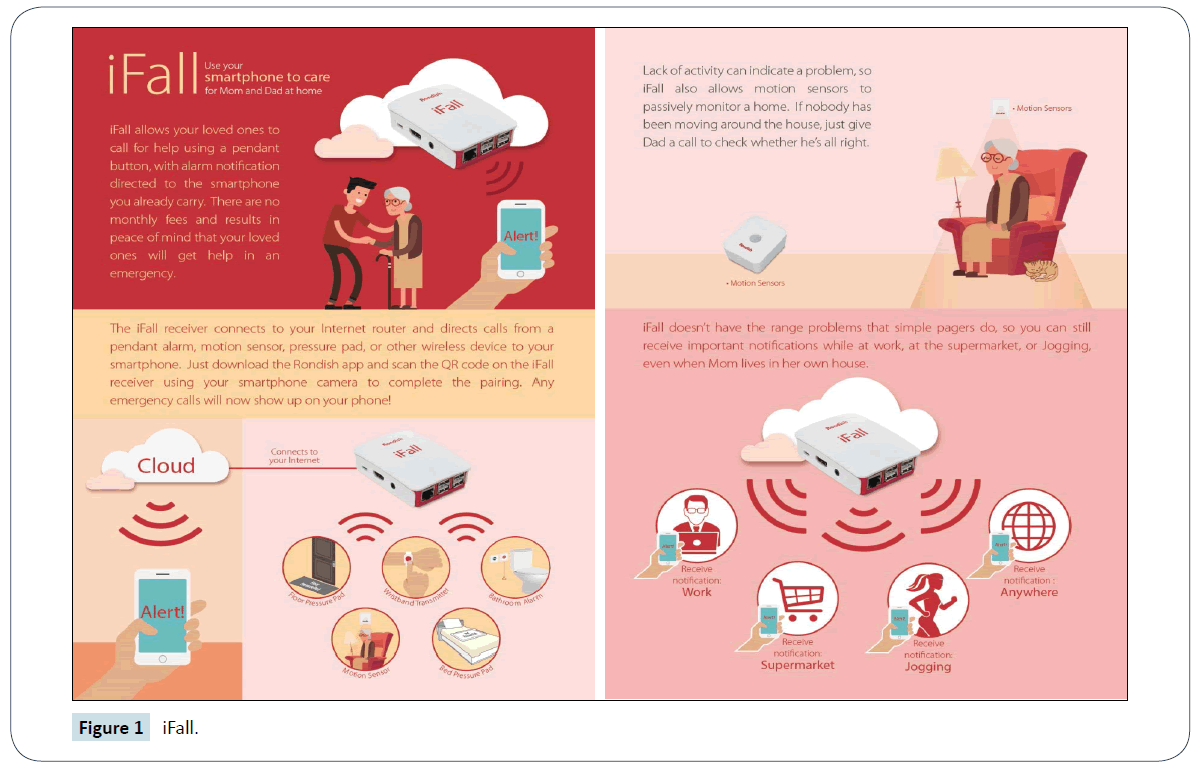John YorkWilliams*
Rondish Company Limited, Hong Kong
*Corresponding Author:
John YorkWilliams
Director, Business Development
Rondish Company Limited, Hong Kong
Tel: 852-25416685
E-mail: johnyorkwilliams@gmail.com
Received Date: September 22, 2017; Accepted Date: October 13, 2017; Published Date: October 20, 2017
Citation: Williams JY (2018) Healthcare Security Technology. J Healthc Commun 3:3. doi: 10.4172/2472-1654.100114
Background
Rondish Company Limited, started as a local traditional security business in Hong Kong in 1990, installing alarms, access control, CCTV and other mainstream security devices. That was until we realized the healthcare and elderly systems market sector was particularly underserved by our industry and needed specialist devices designed for it. So we made that objective the key part of our mission. The result is that about 90% of our business is now in healthcare security, sold internationally.
Necessity is the Mother of Invention
Early on we purpose-designed and installed wireless emergency alarm systems to suit new build HK Housing Authority and Housing Society elderly housing from the late 90’s onwards. The system was a world-beater and not only sent an alert signal from all parts of the complex, but also showed the location of the caller, like an internal GPS, and recorded how long it took security to respond. Even after 15+ years these robust systems are still operating with highest levels of security.
Similar major elderly housing Alert Alarm systems have also been installed in Singapore, but designed and customized to the local need and way of responding and managing emergencies. While Hong Kong and Singapore take a largely community approach to providing elderly housing with safety features, other countries like the US prefer a private enterprise, market-based approach. Rather than large systems, they want lower-cost, simple solutions for diverse smaller care home operations providing emergency calling function, fall prevention devices and anti-wandering systems. So during the 2000s and beyond we designed a series of products to meet these needs. The US and Canada and Australia, and the UK now use a great number of simple bed and chair monitor and sensor pads or mats for patient safety and nursing productivity purposes in their stretched healthcare systems. Also many anti-wander door-monitoring systems are used in dementia homes to head patients off when they are about to leave unsupervised, and in some countries insurance companies even mandate this.
We recently launched a bed sensor pad called iN-Pad which works underneath mattresses (of a defined type) with total patient comfort since it’s invisible to them, especially designed for a European bed manufacturer. One mystery to us is that nowadays our home market Hong Kong uses as many of the simple fall prevention and wander prevention devices as the US, for productivity as much as safety purposes, but Singapore has still not cottoned onto these devices, at least not ours…
The Future is Digital
iFall
The latest ideas are digital and naturally use smart phones, the internet and the cloud. Our iFall product, for example, provides an app on your smart phone so you may care remotely for your Mom and Dad Aging in Place at their own home, which most fit elderly naturally prefer to moving to retirement or care homes, for as long as possible (Figure 1).

Figure 1: iFall.
SmartBeds
SmartBeds (Figure 2) is an exciting new patient management system whose primary function is to prevent falls by vulnerable, usually elderly, patients. It does this by enabling Caregivers to supervise more smartly the beds under their control, to better manage and serve the patients in them, and particularly to keep an eye on patients when they exit the bed to go to the bathroom. This is when many risky patient falls occur in hospitals and elderly homes. This anti-fall and bed management innovation for elderly homes and hospital wards is being launched end October 2017:

Figure 2: Smart beds.
- prevents falls (bed exit alarm plus patient non-return alert with set time)
- shows beds occupied and free
- provides caregiver reminders for bathroom breaks, drinks, etc.
- provides movement reminders to help prevent bed sores
- enables events data management (on PC and smartphone)
- records caregiver has attended an alarm
- provides call button option for mobile patients
Future devices will evolve the apps available on smartphones and the devices used at home or in care facilities. They could be used by hospitals to give remote after care supervision after leaving hospital during recuperation. For example, our new CarePort receiving tower in a kit with the iN-Pad will upload unusual sleeping activity or inactivity and send via a secure account to remote caregivers’ smart phones. It’s a way of keeping an eye on patients, or Mom and Dad, or your senior friends you are concerned about living alone. We suspect community care helped by friends and family, using the latest communications and security technology, will naturally supplement professionals, as Aging in Place becomes a dominant form of fit eldercare.



